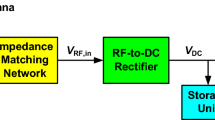Abstract
This paper explains, the novel design architecture of a 3.2 Gbps PMOS-based low-voltage differential signaling (LVDS) receiver architecture using 18 nm FinFET technology. The designed LVDS receiver meets the requirements of the high data rates applications. The pre-amplifier stage and the differential to the single-ended stage with buffer make up the fundamental building blocks of this LVDS receiver architecture. LVDS signal is amplified by a pre-amplifier and after pre-amplifying, the signal is converted from double ended to single ended through a differential amplifier, the resulting differential outputs generate a CMOS signal. The study suggests a LVDS receiver with a current source bias circuit developed in the 18 nm standard FinFET process for the DAC of the DDS system. The outcomes of the design simulation demonstrate that the suggested LVDS receiver is appropriate for the IEEE LVDS standard. This architecture achieved a data rate of 3.2 Gbps with 1.6 GHz frequency, the circuit consumes 6.805 mW of power, 3.780 mA of current, and AC simulation gain is about 13.3 dB from a 1.8 V supply at a typical corner level. The proposed LVDS receiver circuit resulting a transient simulation of rising and falling delays, also with the help of eye diagram simulation, the rise and fall jitter is calculated for typical, slow, and fast corners with a low- and high-temperature range. The proposed LVDS receiver architecture was implemented using the Cadence Virtuoso tool with an 18 nm FinFET technology node.

















Similar content being viewed by others
References
Diao Y, Tong X. Design of self-biased LVDS receiver for DAC in high-speed DDS systems. In: IEEE 2nd international conference on electronics and communication engineering, 2019.
Chacko BP, Christo Ananth ME. Analysis and design of low voltage low noise LVDS receiver. In: IOSR-JECE, 2014.
Xu HY, Wang J, Lai JM. Design of a power efficient self-adaptive LVDS driver. IEICE Electron Express. 2018;15:20171276.
Fan W, Li ZL, Xi JX. A 1.2 Gbps failsafe low jitter LVDS transmitter-receiver applied in CMOS image sensor. In: 7th international conference on modern circuits and systems technologies (MOCAST), 2018.
Traversi G, Bonacini S, De Canio F, Gaioni L, Kloukinas K, Manghisoni M, Ratti L, Re V. Design of low-power, low-voltage, differential I/O links for high energy physics applications. J Instrum. 2015;10(1):01055.
Jayshree VS, Chatterjee A. A methodology for designing LVDS interface system. In: Proceedings of the IEEE sixth international symposium on embedded computing and system design, Patna, India, 15–17 December 2016.
Bai X, Zhao J, Zuo S, Zhou Y. A 2.5 Gbps, 10-lane, low-power, LVDS transceiver in 28 nm CMOS technology. 2019.
Satława T, Drozd A, Kmon P. Design of the Ultrafast LVDS I/O Interface in 40 nm CMOS Process. In: International conference “mixed design of integrated circuits and systems”, June 19–21, 2014.
Marar HW, Abugharbieh K, Al-Tamimi A-K. A 1.8 V low power 5 Gbps PMOS-based LVDS output driver with good return loss performance. Analog Integr Circ Sig Process (2014)
Sujatha K, Bhagirath TN, Garje KK. Design and simulation of high-speed comparator for LVDS receiver application. In: IEEE INDICON, 2015.
Traversi G, De Canio F, Liberali V, Stabile A. Design of LVDS Driver and Receiver in 28 nm CMOS Technology for Associative Memories. In: 2017 6th international conference on modern circuits and systems technologies (MOCAST).
Xu Y, Sun T, Zhao F, Hu C. A Full-integrated LVDS Transceiver in 0.5m CMOS Technology. In: 2014 IEEE 9th conference on industrial electronics and applications (ICIEA).
Kim JB. Design of a low-power CMOS LVDS I/O interface circuit. J Energy Power Eng. 2015. https://doi.org/10.17265/1934-8975/2015.12.008.
Alqarni SA, Kamal AK. LVDS receiver with 7 mW consumption at 1.5 Gbps. In: 26th international conference on microelectronics (ICM), 2014.
Funding
No funding was received for this research.
Author information
Authors and Affiliations
Corresponding author
Ethics declarations
Conflict of Interest
No conflict of interest.
Additional information
Publisher's Note
Springer Nature remains neutral with regard to jurisdictional claims in published maps and institutional affiliations.
This article is part of the topical collection “Advances in Computational Intelligence, Paradigms and Applications” guest edited by Young Lee and S. Meenakshi Sundaram.
Rights and permissions
Springer Nature or its licensor (e.g. a society or other partner) holds exclusive rights to this article under a publishing agreement with the author(s) or other rightsholder(s); author self-archiving of the accepted manuscript version of this article is solely governed by the terms of such publishing agreement and applicable law.
About this article
Cite this article
Maragowdanahalli Shivalingaiah, N., Anamanahalli Mariyappa, V.P. Performance Analysis of FinFET-Based LVDS I/O Receiver Architecture. SN COMPUT. SCI. 4, 145 (2023). https://doi.org/10.1007/s42979-022-01571-6
Received:
Accepted:
Published:
DOI: https://doi.org/10.1007/s42979-022-01571-6




